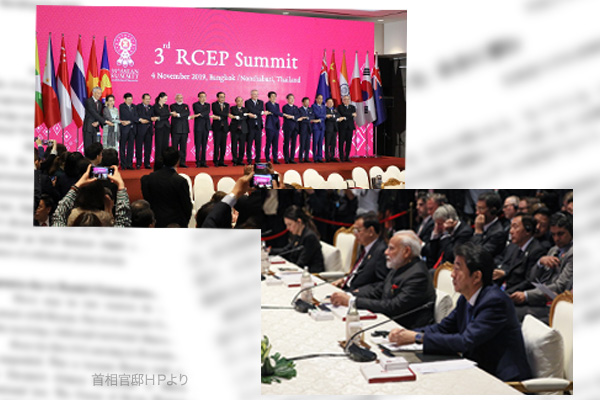The 16-nation Regional Comprehensive Economic Partnership (RCEP) was supposed to create the world’s largest trading bloc. But India’s withdrawal from the RCEP has undercut that objective. It is now seems almost certain that China would dominate the RCEP, which is likely to be opened for signature next year.
The main factor behind India’s pullout from the RCEP was China, which Harvard’s Graham Allison has called “the most protectionist, mercantilist and predatory major economy in the world.” At a time of slowing Indian economic growth, the RCEP could exacerbate India’s problems by opening the floodgates to the entry of Chinese goods.
Doubled Chinese trade surplus with India
China, while exploiting India’s rule of law to engage in large-scale dumping, keeps whole sectors of its economy off-limits to Indian businesses, including India’s $181-billion information technology industry. Beijing has also dragged its feet on dismantling regulatory barriers to the import of Indian agricultural and pharmaceutical products.
Since Indian Prime Minister Narendra Modi took office in 2014, China’s trade surplus with India has more than doubled to over $60 billion annually. China’s unfair trade practices are systematically undermining Indian manufacturing and competitiveness, with the result that Modi’s “Make in India” initiative has yet to seriously take off. In fact, China’s annual trade surplus with India is significantly larger than India’s total defense spending, underscoring the extent to which India is underwriting Chinese hostility.
India already has free trade agreements (FTAs) with 12 of the other 15 RCEP participating countries, and is negotiating an FTA with Australia. The main beneficiary of India’s entry into the RCEP would be Beijing, because it would effectively establish a China-India FTA via the backdoor.
It is one thing for India to have China on its Himalayan borders; it is another thing to let China in via the backdoor.
Chinese President Xi Jinping has held two “informal” summits with Modi since April 2018. These summits have yielded little progress on the political, trade and border issues that divide the world’s two most-populous countries.
Indeed, at the second summit, held in the Indian coastal town of Mamallapuram in October 2019, Xi sought to rope India into the RCEP in an effort to shield his country’s burgeoning trade surplus with New Delhi. According to Indian Foreign Secretary Vijay Gokhale, “President Xi has assured us that India’s concerns over the RCEP will be duly discussed. Although both Modi and Xi emphasized on the importance of having a rules-based global trading system, the Indian prime minister clarified to China that a deal should be balanced and equitable. China said it has heard India’s concerns and has agreed that there are still issues that need addressing.”
However, within weeks of the Mamallapuram summit, India pulled out of the RCEP.
Rejoin is possible if India’s concerns are addressed
Tokyo does not want an RCEP without India because it would mean a China-led trading bloc. Japan thus would seek to persuade India to rejoin the RCEP. If compromises are reached to address Indian concerns, India could potentially rejoin the RCEP.
India needs to become more competitive in its own right, because no barrier can be high enough to protect it from China’s economic power. But India cannot become competitive without curbing China’s dumping and other rapacious trade practices.
Brahma Chellaney is a professor of strategic studies at Center for Policy Research, New Delhi.


